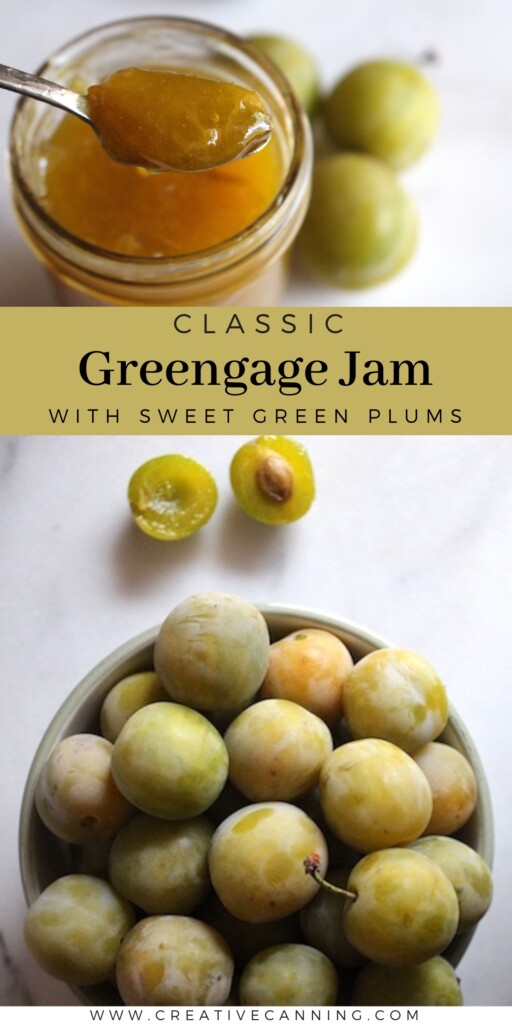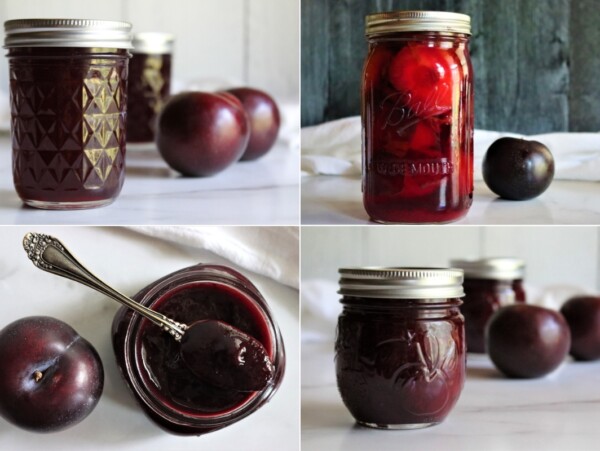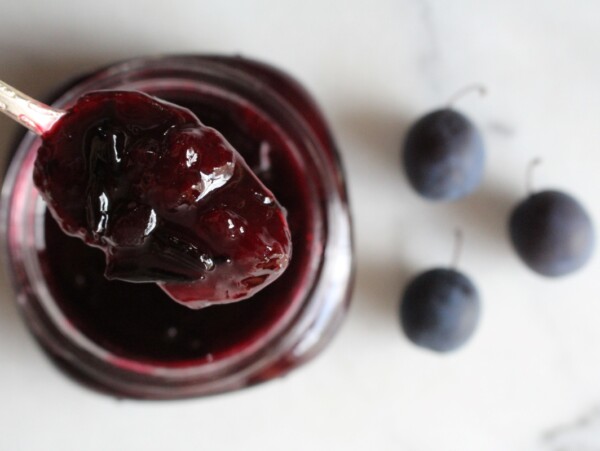This post may contain affiliate links. Please see our disclosure policy.
Greengage plum jam is a traditional preserve made from one of the most flavorful heirloom plum varieties. These green-skinned plums have a rich, honey-like taste that translates beautifully into a smooth, golden jam. With just sugar, lemon juice, and a bit of patience, this small-batch recipe captures the essence of greengages in every jar.
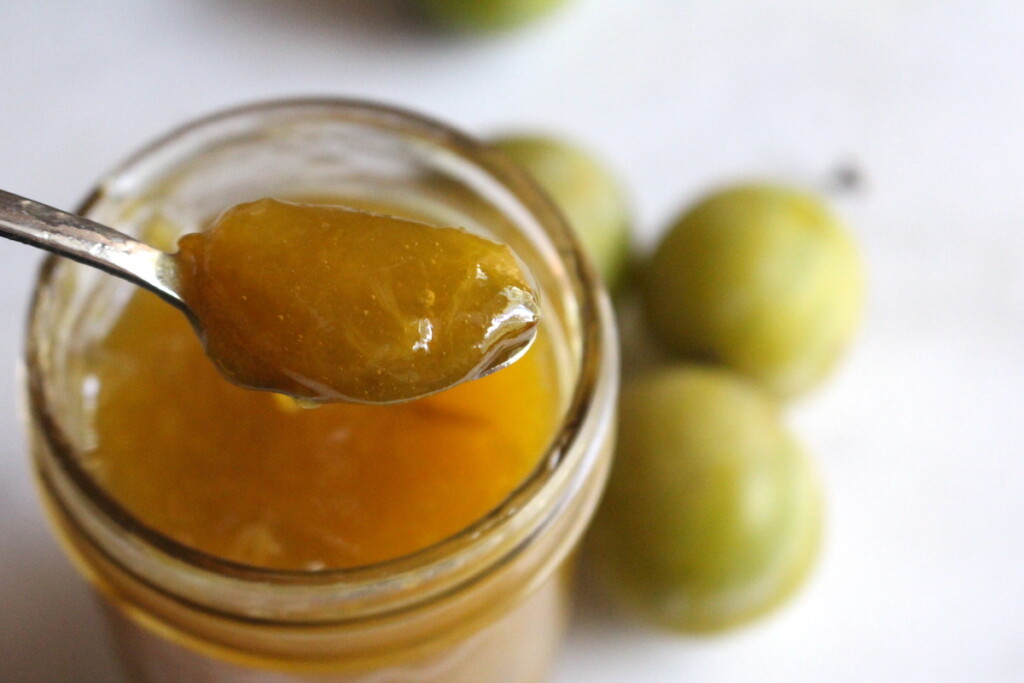
Greengage plums are a rare treat, prized for their intensely sweet, floral flavor and firm, juicy flesh. Unlike the more common red or purple plums, greengages ripen to a soft green or golden hue and have a delicate balance of sugar and acidity that makes them ideal for preserving. While they may not stand out in the fruit bowl, their flavor is unmatched—rich, complex, and almost honeyed when cooked down into jam.
These plums don’t need much dressing up; just a bit of lemon juice for balance and sugar to help them gel. There’s no need for added pectin—greengages have enough natural pectin to set beautifully with a bit of care during cooking. The result is a soft-set jam with a light amber color and a flavor that tastes far more sophisticated than the ingredient list suggests.
This small-batch recipe yields about 4 to 5 half-pint jars and is suitable for water bath canning or refrigerator storage. The process is straightforward and beginner-friendly, making it a great choice for anyone looking to capture the flavor of greengages before they disappear for the year.
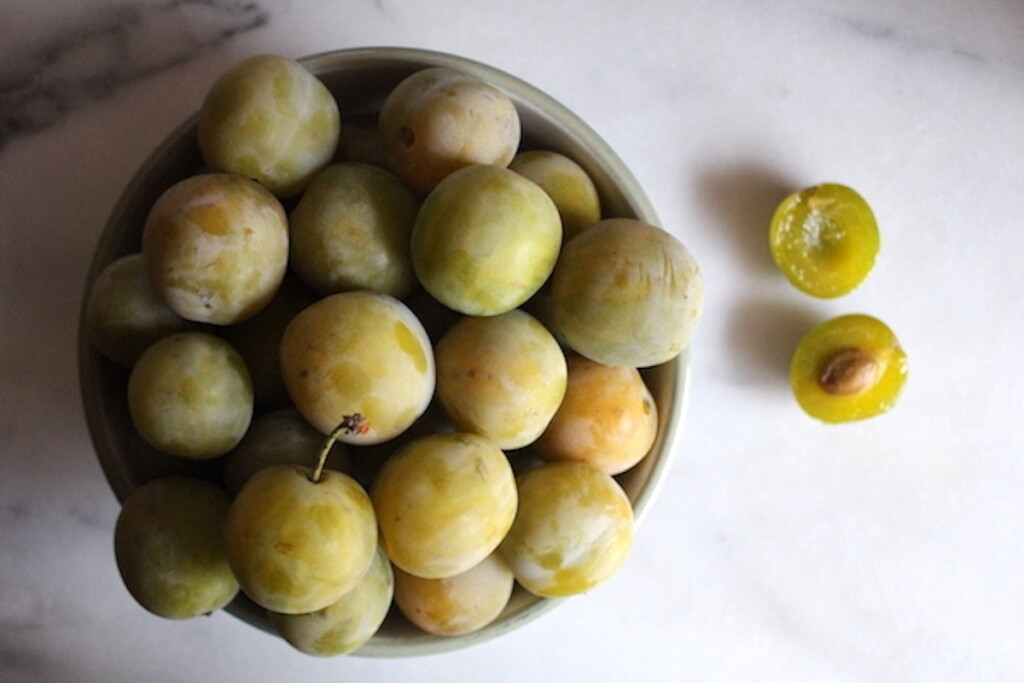
Ingredients for Greengage Plum Jam
This particular recipe is adapted from The Joy of Jams, Jellies and Other Sweet Preserves by Linda Ziedrich.
To make a canner batch of about 4 to 5 half-pint jars, you’ll need:
- 2½ pounds greengage plums (about 8 to 10 medium-sized plums)
- ½ cup water
- 3 cups granulated sugar
- 1½ tablespoons lemon juice
Start by selecting fully ripe greengage plums. They should pull away from the stems easily but still feel firm to the touch. The skins often have a natural powdery bloom—just wipe them gently with a damp cloth.
The water helps the plums soften during cooking, while the lemon juice boosts acidity and helps the jam set. You can experiment with different sweeteners like honey or maple syrup, but keep in mind this may affect the set and texture, so you may need to adjust quantities or cooking time.
How to Make Greengage Jam
Begin by washing and pitting the greengage plums. You can chop them into quarters or eighths, depending on the texture you prefer in your finished jam. They do fall apart quite a bit during cooking, but not completely.
And since this jam relies a bit on the skins of the plums for pectin, it’s important not to peel them. But as a result, the size you chop them will determine the size of the peel bits in your jam. They soften, but still, you don’t want huge stringy chunks in there.
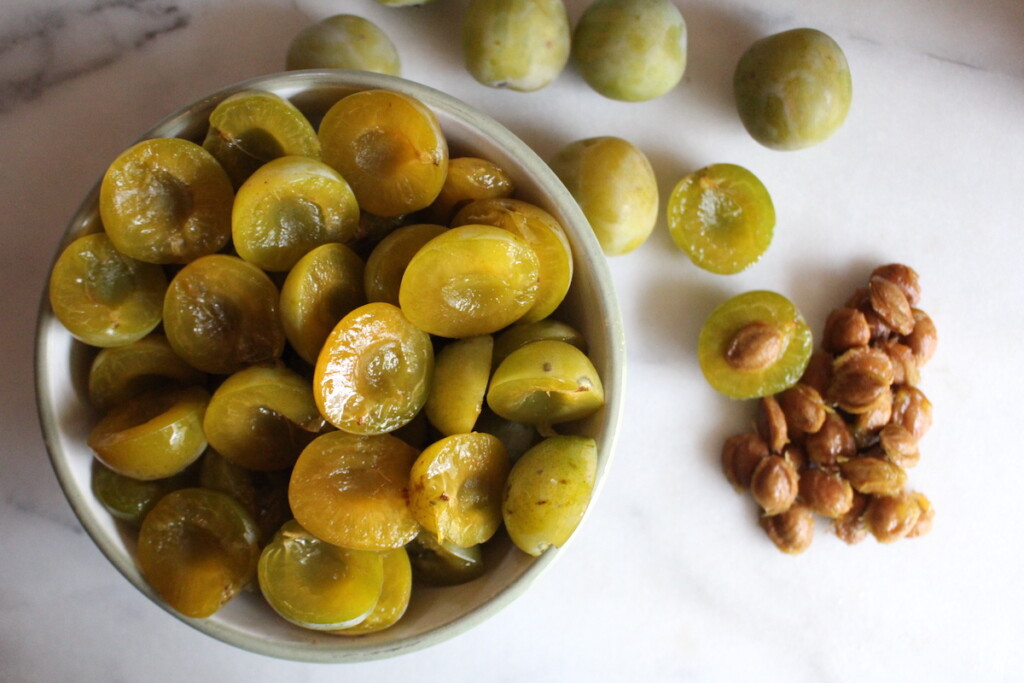
Combine the plums with the water in a wide, heavy-bottomed jam pot and bring the mixture to a simmer. Cook for about 10 minutes, stirring occasionally, until the fruit is tender and beginning to break down.
Once the fruit has softened, add the sugar and lemon juice. Stir to dissolve the sugar completely, then increase the heat and bring the mixture to a full rolling boil. Continue boiling the jam, stirring frequently to prevent sticking, until it thickens.
You’ll know the jam is ready when it passes the wrinkle test (chilled plate method) or reaches 220°F on a candy thermometer. Remove the jam from heat, skim off any foam if needed, and proceed ladle into prepared jars.
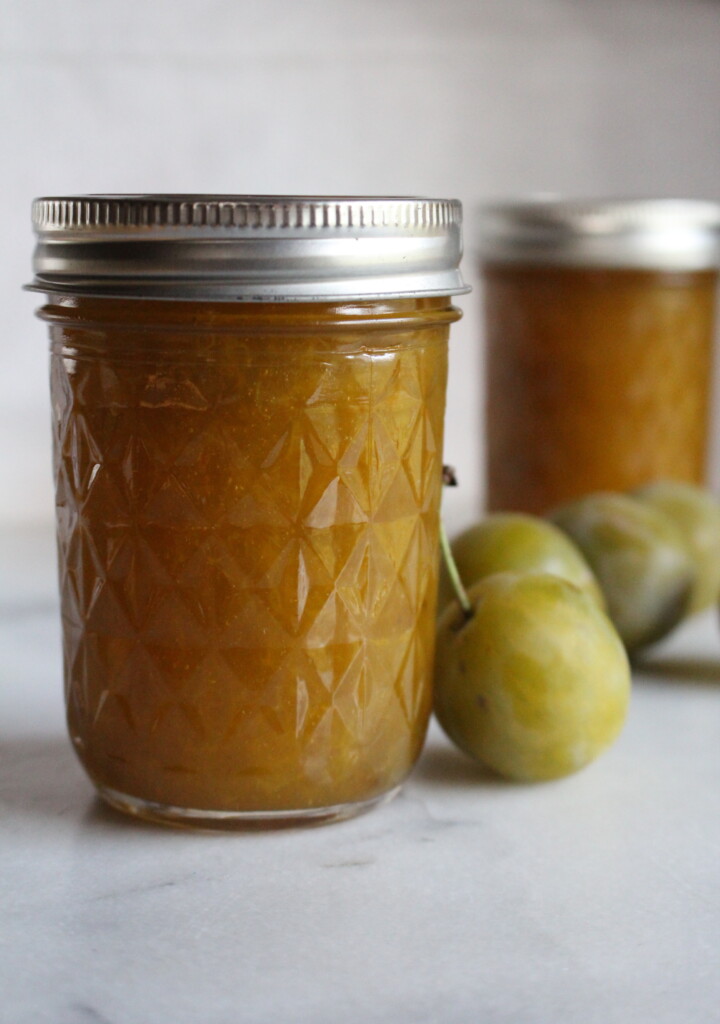
Canning Greengage Jam
If you plan to store your greengage jam at room temperature, it must be processed in a boiling water bath canner to ensure safety and shelf stability. Before you begin, prepare your jars, lids, and canner, keeping everything hot until you’re ready to fill.
Once the jam is cooked, ladle it into warm, sterilized jars, leaving ¼ inch of headspace. Wipe the rims with a damp cloth, apply two-piece canning lids, and secure them fingertip-tight.
Process the jars in a boiling water bath for 10 minutes if you’re below 6,000 feet in elevation, or 15 minutes if you’re above. After processing, remove the jars and let them cool undisturbed for 12 to 24 hours. Once cooled, check the seals and store the jars in a cool, dark place.
Properly sealed jars will keep for 12 to 18 months. Once opened, refrigerate and use within 3 to 4 weeks.
Tips for Best Results
- Greengage plums vary in sweetness—taste your fruit first and adjust sugar if needed.
- If you prefer a smoother jam, you can mash the plums as they cook or use an immersion blender before adding sugar.
- This recipe does not use pectin, so reaching the correct temperature and reducing the jam properly is key for getting a good set.
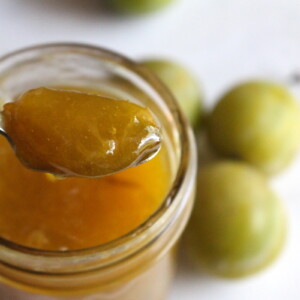
Greengage Jam
Equipment
Ingredients
- 2½ lbs greengage plums, about 8 to 10 medium plums
- ½ cup water
- 3 cups granulated sugar
- 1½ Tbsp lemon juice
Instructions
- Wash and pit the greengage plums. Cut them into quarters or smaller pieces depending on the desired texture of your jam.
- Combine the chopped plums and water in a large, heavy-bottomed saucepan. Bring to a simmer and cook for about 10 minutes, stirring occasionally, until the fruit softens and starts to break down.
- Add the sugar and lemon juice. Stir to dissolve the sugar completely. Increase the heat and bring the mixture to a full rolling boil.
- Continue boiling, stirring frequently, until the jam reaches 220°F on a thermometer or passes the wrinkle test on a chilled plate.
- Remove the jam from the heat. Skim off any foam if necessary.
- Ladle the hot jam into warm, sterilized jars, leaving ¼ inch headspace. Wipe the rims, apply two-piece lids, and tighten until fingertip tight.
- Process in a boiling water bath canner for 10 minutes at elevations up to 6,000 feet or 15 minutes above 6,000 feet.
- Let jars cool undisturbed for 12 to 24 hours. Check seals before storing.
Notes
Nutrition
Nutrition information is automatically calculated, so should only be used as an approximation.
Small-Batch Preserves
If you’re filling your pantry with homemade jams, there are plenty of other seasonal recipes to try.
Cherry jam is rich and deeply flavored, perfect for spooning over pancakes or baking into pastries. Raspberry jam offers bright, tangy notes and a vibrant color, while blueberry jam has a naturally thick texture and mild sweetness that pairs well with everything from toast to yogurt.
For something a little different, try strawberry rhubarb jam, which balances sweet and tart with a classic spring flavor, or fig jam, a late-summer favorite with a dense, luxurious texture. Each recipe highlights the fruit at its best, using simple ingredients and small-batch methods.
